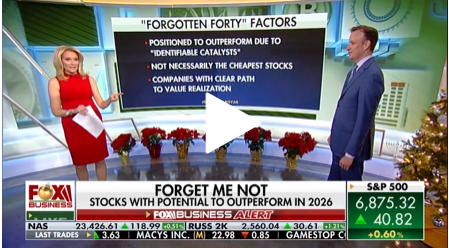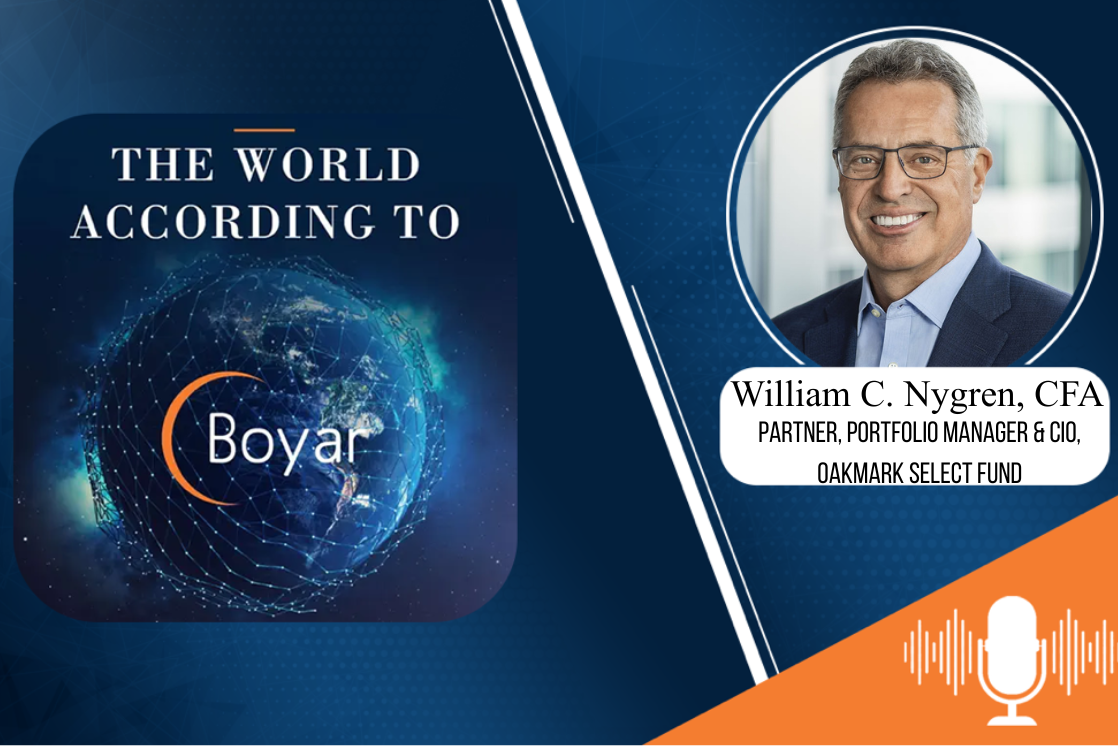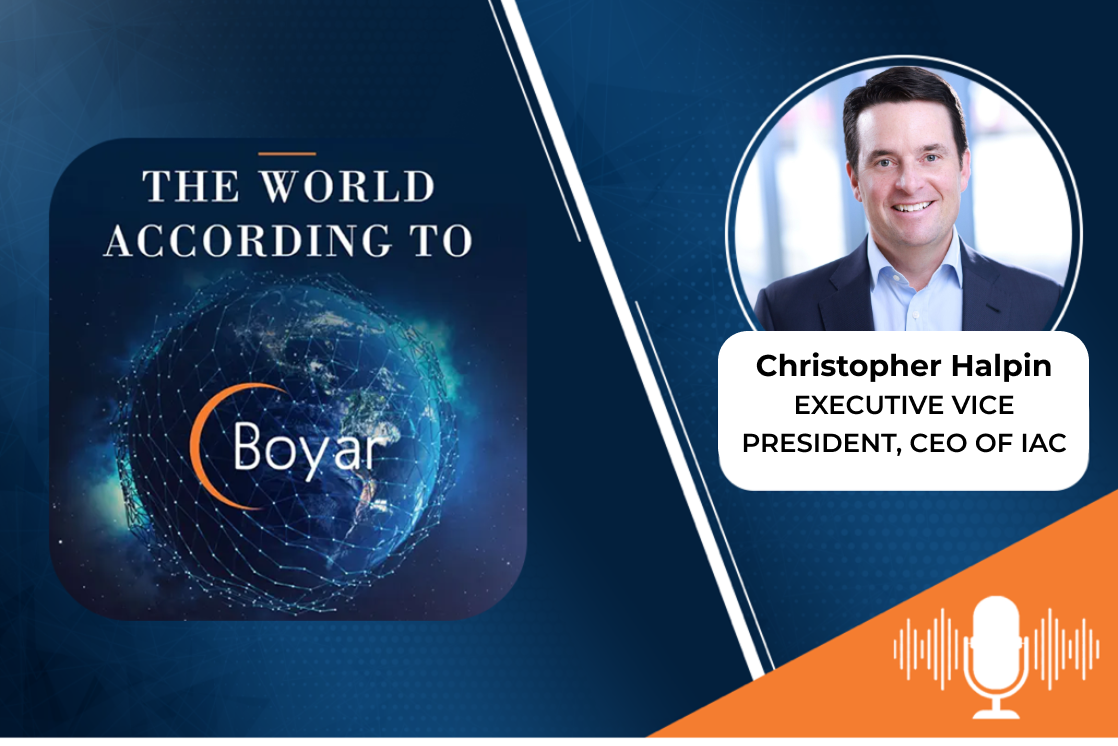Steve Einhorn: Vice Chairman of Omega Advisors, Inc. on investing in an unpredictable environment and how Omega blends macroeconomics with fun.
Click Here to Read the Interview Transcript
Transcript Of The Interview With Steve Einhorn:
Jonathan Boyar [00:09]
Our guest today is Steve Einhorn, vice chairman of Omega Advisors, one of Wall Street’s most successful and best-known hedge funds. Steve joined Omega in 1999. Prior to Omega, Steve had worked at Goldman Sachs since 1977 and eventually became a partner. He led the Global Investment Research Department and was chairman of the Investment Policy Committee.
Steve, welcome to the show. Thank you Jon. So Omega is obviously very well known in the investment community, but can you just briefly discuss the general strategy and how it’s evolved over time?
Steve Einhorn [01:01]
Sure. Omega is principally a long short equity hedge fund. The bulk of the equity assets are in the US, though we do have exposure at times it can be significant, but typically average exposure in developed economy markets in the euro area and Japan. But again, as I said, it is principally in the equity area, a US focused portfolio. Omega is a firm that would prefer, as an example to generate a 15 percent or so lumpy return than a eight to 10 percent non lumpy straight line return. That is we are willing to take equity like risks for equity like returns and will undertake a bit more volatility in pursuit of those equity like returns. Our interest is in exceeding returns on the S&P500 by several hundred basis points which we have done since inception with lower than market volatility and then finally a hallmark of Omega since inception and to this day is that the general partners have a large share of the assets under management, so our interests are perfectly aligned with those of our investment partners.
Jonathan Boyar [02:30]
One of the things that really intrigues me about Omega is that you are fundamental investors, but you clearly, I mean your background’s in economics, spend a lot of time on the macro and there’s someone fundamentally opposed, you know, being a bottoms up investors and taking a top down approach. How do you marry the two?
Steve Einhorn [02:52]
That’s a terrific question because it is unusual in the hedge fund community to have an organization that devotes its resources and intellect to both top down macro exercise and a bottoms up stock picking exercise and the blend for us has worked well. The macro work that we do on economies in the US and in developed economies and the work that we do on equity markets and risk markets in the US and in economies outside of the US, sets an investment landscape for us. It allows us to have a view, for example, of where the aggregate equity market should trade in a given year or so and that that view will depend as you would expect, on our assessment of economic activity in the US and outside of the US. Our assessment of earnings growth, our assessment of monetary and fiscal policies, our assessment of valuation, supply and demand for the equities within the US and those building blocks.
Steve Einhorn [04:08]
If you will allow us to come to a judgment and assessment of the equity market. That judgment helps inform us as to what exposure we want in the portfolio itself. So if our outlook is a constructive one, as it has been now for a number of years, that bottoms up approach allows us to take more into the portfolio in terms of stock specific risk because as you know, to a large extent, a given securities return, while there will be elements specific to that stock will also be a function of the overall market landscape itself. So first and foremost, the macro economic and market work and research that we do presents an outlook for the equity market that informs us as to how much risk we want to take in the portfolio. As the analysts come to us, bottoms up with recommendations. The second way the macro economic and risk market outlook informs the portfolio is that macro economic and risk market outlook will also have implications for relative sector performance and it will, while we are bottoms up stock pickers and don’t target per se, sector weightings, we can with a macro outlook, lean to given sectors based upon the outlook and the implications of it.
Steve Einhorn [05:55]
For example, if the outlook is for a below average period of economic growth with low inflation, we will want to emphasize those companies that are more insulated from the economic cycle, more insulated from competition and can grow independent, if you will, from the economic cycle itself and that can lead you to certain sectors, whether those be technology or healthcare or selected areas and financial, so that’s the second way that a macro economic market approach can marry with a top down, bottoms up stock picking approach. The third way is we have various programs within Omega option programs that are dependent to some extent on a market outlook as we sell premium either on the market or individual securities and the market outlook can help us devise the appropriate approach for that as well. So those are a couple of the ways that we have tried at Omega to marry top down analysis with bottom up stock picking.
Jonathan Boyar [07:15]
One of the other things that I think as an investment manager is probably the most difficult and maybe it’s more art than science, is position sizing. How do you think about that at Omega and also how do you decide to exit a position and does capital gains tax have any impact on that decision?
Steven Einhorn [07:33]
Well, you know, the sizing will be a function of several items. One is liquidity. We never want to be so large in a security that we can’t get out without disturbing the market price in a significant way. Second, and perhaps most importantly, it is the risk reward set that the analysts comes to the stock selection committee with. We have a stock selection committee at Omega. The analysts propose to that committee given names that they are recommending for the portfolio and attached to that recommendation is an upside target and a downside risk and there will be a fairly extensive discussion of the name, the fundamentals supporting the recommendation and the risks surrounding it, but the essence of the recommendation will be the analyst judgement as to upside and downside. So the more significant the ratio of upside return to downside risk is, the more inclined we will be to make it a larger position.
Steven Einhorn [08:40]
Again, adjusting for liquidity itself. So those are the two principle metrics that we would look at in terms of sizing a given name, typically at Omega, a large long position for us would be three to maybe five percent of the asset base and a large short position for us would be about one to two percent of the asset base. In terms of the decision making to exit a name first and foremost, and the happiest way to exit a name is that it meets all of what we expected of it in terms of fundamentals. Those fundamentals are reflected in the stock price. It meets our stock price, we exit because it no longer has the upside opportunity that we had when we started the position. Second, not so pleasant way to exit a position is we were simply wrong on our assessment of fundamentals. We come to recognize that and exit because it is not delivering as we anticipated when we entered the position.The third means of exiting or a catalyst for exiting is while a given position in a given sector may be doing well and meeting the fundamental assessment we had at the outset.
Steven Einhorn [10:13]
The analyst may have found another name within his or her sector that they now find to be more attractive and want to swap a given name for the other name, where the fundamentals look better, so those are three ways by which we would exit a position in the portfolio
Jonathan Boyar [10:38]
As far as hedge funds go, your long-term investors as turning the portfolio over what seems like daily but in in an age where the executive brands and not getting into politics itself to much is more unpredictable than previous ones. How do you position yourself if at all, with tweets moving the market and just a huge amount of uncertainty?
Steven Einhorn [11:05]
We are fundamental investors and while we certainly recognize that geopolitical headlines can be disturbing to the market on a short term basis. We have to, as best we can decide whether those geo political or tweets effect the fundamental outlook that we have for economic activity, for profits, for cashflow, for monetary policy, for fiscal policy. Or are they noise to be ignored. Understanding they can do things on a short term basis, so for example, our assessment of the various trade tweets and headlines that have come about in the last month or so. Our assessment has been that that was mostly noise, that we would not experience a trade war with China or any other relevant trading partner, that we would successfully negotiate what needed to be negotiated to reduce whatever trade imbalances existed over time that the talk would not deter or dent the in place synchronized global economic and earnings expansion.
Jonathan Boyar [12:32]
We are in the midst of and whatever short term dent to the equity market came about because of this noise surrounding trade and tariff headlines would be a buying opportunity for us rather than not because our judgment in this particular instance was it was noise. Noise is defined as not disturbing the fundamental outlook that we have.
Currently What sectors do you like the most and why?
There are three in particular or four actually. One is technology more broadly, the software side of technology and here we see very rapid growth both in revenue, earnings, cash flow and free cash flow. We see moats around many of these companies which will allow them to maintain pricing flexibility and above average and growing margins and third, we are in a global landscape where we believe growth will be less than it has been historically, both real growth and inflation, so nominal GDP, if you will, will trend over the next several years at a rate less than what it has trended historically and in that environment where it is difficult to find growth.
Steven Einhorn [14:03]
We think technology more independent of the business cycle than many other sectors is a good place to be and for many of these companies, the multiple that we are paying for this rapid growth is not at all unusual or excessive and the P/E to growth rate is in fact in many instances below that of the S&P. So technology is an area where we can get growth without the need for a robust global economy is one area we like. The second area that we like and this has more to do with the cycle than longer term is industrials. We are in the midst of a synchronized global economic expansion. Both developed economies, emerging economies and the industrial sector serves that global economy more broadly than most sectors, has very good upward earning, momentum, positive earnings revisions and attractive valuations. Again, has a reasonably strong free cashflow secto,r buying shares back of augmenting earnings growth via those buybacks, so industrials are the second area or second sector that we like.
Steven Einhorn [15:21]
We like financials as well. Financials, depending upon whether one is looking at the global banks or the more specialty finance companies we think are all selling attractively relative to tangible book. We expect that this is a sector that can be sizable and its dividend growth given a somewhat more relaxed leverage requirements and somewhat more relaxed stress tests. We believe they can be sizeable in terms of share buybacks and proper asset allocation as well, so financials would be a third sector that we like. Energy is an interesting one, has been a difficult sector to participate in given the volatility of the underlying commodity, but our work currently shows that with this fairly significant run up in oil prices up until recently, the energy stocks themselves, have not reflected it. So energy would be an area, at least perhaps on a shorter term basis that we would gravitate to as well.
Steven Einhorn [16:24]
The areas that we have less interest in tend to be the utilities and telecom. Those are interest rate sensitive. We do expect interest rates across the yield curve to be increasing albeit gradually, but nonetheless increasing. And that tends to be a headwind to the more defensive interest rate sensitive sectors. Consumer staples is an area that looks to be expensive to us on a multiple basis relative to underlying growth prospects. They also are not all that levered to the in place synchronized global economic expansion that we are in the midst of. So those would be three sectors that we would be emphasized in a portfolio.
Jonathan Boyar [17:13]
The time that I first met you, you gave a fascinating presentation and one of the things you discussed was a bear market checklist. Would you mind discussing again what it is because I think it’s very useful, especially with this bull run some would argue, getting long in the tooth?
Steven Einhorn [17:32]
The bear market checklist has five items attached to it. And in my experience over many number of years, these five items are almost always present at the end of a US bull market and the start of a US equity bear market. So I monitor them closely as a guide to the direction of share prices and where we are within a market cycle itself. So there are five items as I indicated on the bear market checklist. Again, these items tend to be present when we are turning from bull to bear. The first item is problematic inflation and one needs to obviously define problematic inflation. Again, without going into all of the details, our work suggests that problematic wage inflation in the current environment is roughly three and a half to four percent on a year over year basis. That is average hourly earnings today. That measure of wage inflation is about 2.7% percent.
Steve Einhorn [18:48]
We are reasonably far from what I would define as problematic wage inflation. The other element of inflation as focused on by our central bank is core consumer prices. That metric is currently running at about 1.6% year over year. Our assessment is you would need to see a rate of core consumer inflation in excess of 2.25% quarter percent before it becomes problematic to either the economy, our central bank, or the equity market, so item number one on the bear market checklists, problematic wage and consumer inflation. We don’t have it now and we don’t expect to have it for quite a while to come. The next item on the bear market checklist is a hostile Federal Reserve. The Federal Reserve, which is lifting the Fed funds rate as an example well above the neutral rate, lifting the Fed funds rate on a real basis to at least one and a half to two percentage points shrinking
Steve Einhorn [19:59]
Real money supply growth. Those are three elements, if you will, of a hostile fed today. The Fed funds rate at one point six percent give or take, is well below the neutral rate, which is something between two and a half and three percent. We don’t expect the Fed funds rate to get there for at least 15 to 18 months. The real fed funds rate is negative. Nowhere near 150 basis points at a minimum that has typically been needed to define a hostile central bank and third, the monetary base. That money metric which the Fed controls most has slowed but only marginally so I would submit that our central bank is friendly, will lift the Fed funds rate gradually and slowly and not deter economic activity. The third item on our bear market checklist is a prospect of recession. Virtually nothing we look at suggest the economy in the US is prone to recession anytime soon and I would submit in fact that our assessment of fundamentals suggest we are unlikely to experience recession this year or next year and that if we are to experience one in the next several years, the soonest it should be is sometime in 2020, barring some geopolitical event which is unforecastable.
Steve Einhorn [21:31]
The fourth item on the bear market checklist is investor sentiment. That is when it gets unusually strong, speculative, excessive on the optimistic side, that tends to signal the end of a bull market. This has been a bull market which has climbed a wall of worry ever since. It started in early 2009. It continues to climb a wall of worry, equity flows by individual and institutional investors. Current positioning of investors does not at all suggesting that investor sentiment is excessive or speculative, and the final element on the bear market checklist is valuation. That is an equity market extended relative to interest rates and inflation can be a constraint to the market overtime. Our work would suggest that at the current multiple, the market today is not at all extended relative to interest rates. Just two examples. Historically, the market multiple forward multiple for the S&P has averaged about 15 times forward earnings today.
Steve Einhorn [22:47]
It is a little over 16 times, so a marginal lift over the long-term average. Yet when the multiple is averaged 15 times. Historically the average 10 year government bond rate was over six percent. Today it is 2.8% and when the forward multiple historically is averaged 15, the federal funds rate has averaged approximately 4%. Today it is 1.6%. So the market multiple today, modestly above it’s long term average, is not at all badly priced relative to interest rates. And then the final, I guess example is today, the dividend yield of the S&P is two percent. The buyback yield is a little over two. That’s four percent. That’s a 120 basis points above the 10 year government bond rate. It is unusual for that spread to be positive rather than negative. So there are the five items. None of them are with us today, none are expected anytime soon.
Steve Einhorn [24:04]
And that says to me that the in place bull market in US shares has a long time to go before it is complete and I expect that as it grinds hire our equity market can deliver going forward a total return of somewhere between seven and nine percent, which is certainly better than we believe returns in the fixed income market will be. So I expect that the US equity market can deliver a respectable absolute return. It can deliver a respectable return relative to inflation and it can deliver a respectable returns relative to fixed income alternatives into us. And it should extend for quite some time, and I will close it by saying, as you indicated, this is a bull market which has lasted a very long time. Fortunately, bull markets don’t die of old age. They die because they are murdered by the Federal Reserve. Our Federal Reserve is not in a murderous mentality given tame inflation and moderate economic growth.
Jonathan Boyar [25:22]
That list certainly is comforting. How accurate is it?
Steve Einhorn [25:27]
It’s been quite accurate. That isn’t to say that it’s been perfect because nothing I think any of us do, myself included, gives us perfect insight into the direction of equity markets. It’s not designed as you would expect to provide any short term trading guidance. It is designed to give a longer term, you know, nine, 12, 15, 18 months outlook. And I would submit having gone back and looked at this, that virtually every bear market in the US in the postwar period has come to an end when these five items or the bulk of them are present. And I would submit further that virtually every bull market in the US has ended. When our central bank is hostile as I’ve defined it, so it has been a checklist which has been quite helpful to us in assessing equity market prospects in the US and it continues to be helpful and it continues to give us the message that the in place bull market in US shares should continue for quite some time.
Jonathan Boyar [26:42]
In terms of macro geopolitical events, is there anything that keeps you up at night?
Steve Einhorn [26:47]
Sure. There are a number of geo political risks out there, whether it be the interaction with North Korea, Russia, Iran, and their involvement with Syria versus our interests in that region. There is a developing friction at times between Washington and the European Union government, so those geopolitical frictions which are unforecastable are certainly by me and by many others can pose a risk if they go the wrong way. So that’s one set of risks. There are risks that relate to our fiscal policy, which looks to be a bit too aggressive and expansive given where we are in the economic cycle, given where the unemployment rate is given, where capacity utilization is. We have introduced a very stimulative fiscal policy which runs the risk of overheating our economy and bringing a problematic rate of inflation, which would be a problem for our central bank and therefore a problem for the economy and our equity market.
Steve Einhorn [28:05]
Again, not a risk we think will be realized, but when you ask what can go wrong, part of it is geo political where we really can’t forecast much other than to note the risks and some of the risks are on metrics we can hopefully analytically assess and evaluate like fiscal policy and its implication for the economy, inflation, central bank policy and risk assets, so those are some of the risks, not all of them. Trade policy is still an uncertainty that evolves over time between China and the US. How is NAFTA resolved between ourselves, Canada, and Mexico? Those are all in the economic geopolitical sphere that we have to be aware of and have to assess monetary policy. We have new leadership at the central bank different than what we had for most of the last several years. Do they operate differently than the prior leadership? Is there still a central bank put, if you will, under the equity market in the US, if there is, is it at a lower level than it might otherwise have been because the new leadership may be quote unquote, less dovish than the prior leadership. Those are all risks that one needs to assess in evaluating economic and market prospects. The most difficult ones are the geo political because they’re almost impossible to forecast and if they go the wrong way, they can be sizable and their impact on economic activity and risk assets.
Jonathan Boyar [29:48]
Well, Steve, I really want to thank you for your time today. I enjoyed hearing your wisdom and all of the different sectors and parts of the economy that you you’ve commented on. It’s really appreciated and we hope to have you on the show again soon.
Steve Einhorn [30:05]
Thank you very much.
Jonathan Boyar [30:07]
If you would like to receive a complimentary electronic copy of Harriman’s Book of Investing Rules, The Do’s and Don’ts of the World’s Greatest Investors, please go to www.boyarvaluegroup.com/podcastand complete a brief survey that’s www.boyarvaluegroup.com/podcast. We’ll see you next time.
Disclaimer: This interview does not constitute a complete description of our investment services and is for informational purposes only. It is in no way a solicitation to buy or an offer to sell any securities or investment advisory services. Any statements regarding market or other financial information is obtained from sources which we believe to be reliable, but we do not warrant or guarantee the timeliness or accuracy of this information. Past performance is no guarantee of future results and there is no assurance that any targets or forward-looking statements will be attained. This interview represents the views of Boyar Asset Management as of April 17th 2018 and may change without notice. Boyar Asset Management may own shares in any of the companies discussed during the interview.
Never miss another podcast click here to subscribe today!
Available wherever you download podcasts
About The Boyar Family Of Companies
Boyar Asset Management
We have been managing money since 1983 utilizing our proprietary in-house value-oriented equity strategies. We manage money for high net worth individuals and institutions via separately managed accounts. To find out how we can help you with your money management needs please click here
Boyar Research
Since 1975 we have been producing independent research on intrinsically undervalued companies across the market capitalization spectrum and in a wide variety of industries using a business person’s approach to stock market investing. To find out how we can help you with your research needs please click here












